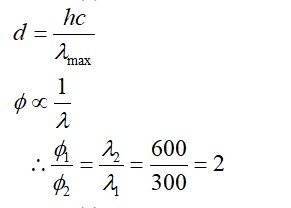An element of group 2 forms covalent oxide which is amphoteric in nature and dissolves in water to give an amphoteric hydroxide. Identify the element and write chemical reactions of the hydroxide of the element with an alkali and an acid.
An element of group 2 forms covalent oxide which is amphoteric in nature and dissolves in water to give an amphoteric hydroxide. Identify the element and write chemical reactions of the hydroxide of the element with an alkali and an acid.
-
1 Answer
-
This is a long answer type question as classified in NCERT Exemplar
In group 2, only beryllium is amphoteric in nature which means it reacts with both acids and bases. Also, beryllium only forms covalent oxide due to the covalent nature. So, the element is beryllium.
It reacts with acid to form beryllium chloride and it reacts with base to form beryllate ion which is soluble in sodium hydroxide. The reaction is shown below.
Be (OH)2+2OH− → [Be (OH)4]2−
Be (OH)2+2HCl →BeCl2+2H2O
Similar Questions for you
Li+ has the highest hydration enthalpy.
Hence it is most hydrated
Therefore, Correct order of hydrated radii is Cs+ < Rb+ < K+ < Na+ < Li+
Taking an Exam? Selecting a College?
Get authentic answers from experts, students and alumni that you won't find anywhere else
Sign Up on ShikshaOn Shiksha, get access to
- 65k Colleges
- 1.2k Exams
- 679k Reviews
- 1800k Answers






